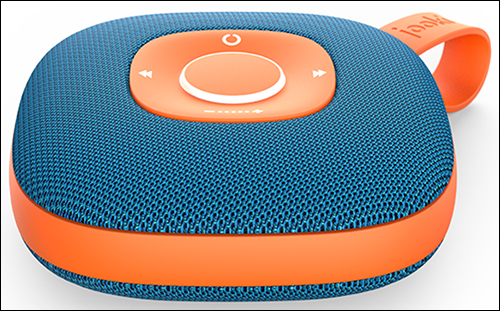A smart music speaker system for kids, based on Near Field Communication (NFC) RFID, is now operable with Spotify accounts to enable playlists from the music-streaming site to be linked to a figurine with a built-in NFC tag.
MuuseLabs, the creator of Jooki, calls its system a portable jukebox for kids (see Small Children Jam to NFC-Enabled Jukebox). The Belgian company released the product in late 2017 as a system to bring music to small children without the distracting effects of screens on smartphones and tablets. The idea was to enable the kids or their parents to upload music to the Jooki app, and to then link the selected music with the unique ID number stored in a figurine’s built-in 13.56 MHz passive NFC tag (which is compliant with the ISO 14443 standard). The company declines to specify the tag and reader hardware used for the system.
When the figurine was placed on the center of an NFC-reading smart speaker, its tag ID was read, and the software then linked that ID with the song or album selection uploaded to the software and began playing the music. Children could enjoy music the old-fashioned way—by listening to it—without having to stare at a screen, says Theo Marescaux, the company’s cofounder and CEO. This meant they were free to dance and engage with the music without using a phone, he adds. Children could also upload stories, or recordings of stories or songs created by parents or other individuals.
However, the company’s longer-term goal was to provide a connection with Spotify, one of the most popular music-streaming sites, in order to make the creation of a song lists possible and easy. With Spotify, the firm explains, users don’t need to upload individual songs or albums, but instead can simply create playlists.
The system is linked to Spotify Connect, the music-streaming system’s app for remote play on other devices. First, a user with a Spotify Premium or Premium for Family account creates a playlist for a specific child. The Jooki speaker must be powered on and connected to Wi-Fi. Once a child is ready to play a song, he or she can then use the Spotify app on the phone or computer to select the song or playlist. The child must click on “Device Available,” and the Spotify app will then prompt a search for a Jooki device connected via Wi-Fi.
Once the Jooki is identified and displayed on the Spotify app, users can select a prompt and place a figurine on the speaker. The system then captures the figurine’s unique ID and links that data to that playlist, after which the Spotify system begins streaming the playlist directly to the speaker. That figurine can be used an unlimited number of times to play the same playlist, until a new list is linked to it.
The Jooki music system gained a lot of press when it was released late last year, Marescaux recalls. At that point, the company began forming partnerships with distributors throughout Europe. More recently, it has been developing connections with similar partners in North America. However, the system’s limitation was the need for users (presumably the parents of small children) to upload a single song or album at a time. “Our biggest focus was on certification of Spotify Connect,” he states.
The technical developments with Spotify posed the greatest challenge for the company, Marescaux says. Now, he adds, the system is available to anyone with a Jooki device and a Spotify account. The speaker is portable and powered with a rechargeable battery. Parents can use the app to limit the speaker’s volume and to set up a “bedtime” during which it will no longer operate.
Only about 2,000 Jookis have been sold to date, Marescaux says, though new orders are continuing to raise that number. Of those already using the device, he adds, the company can see that they typically engage with the speaker system on a daily basis.
According to Marescaux, the firm is now developing other wireless technology features to add to the system. “We’re really just scratching the surface,” he says. “There are numerous options we plan to explore,” though he declines to be specific at this juncture.


